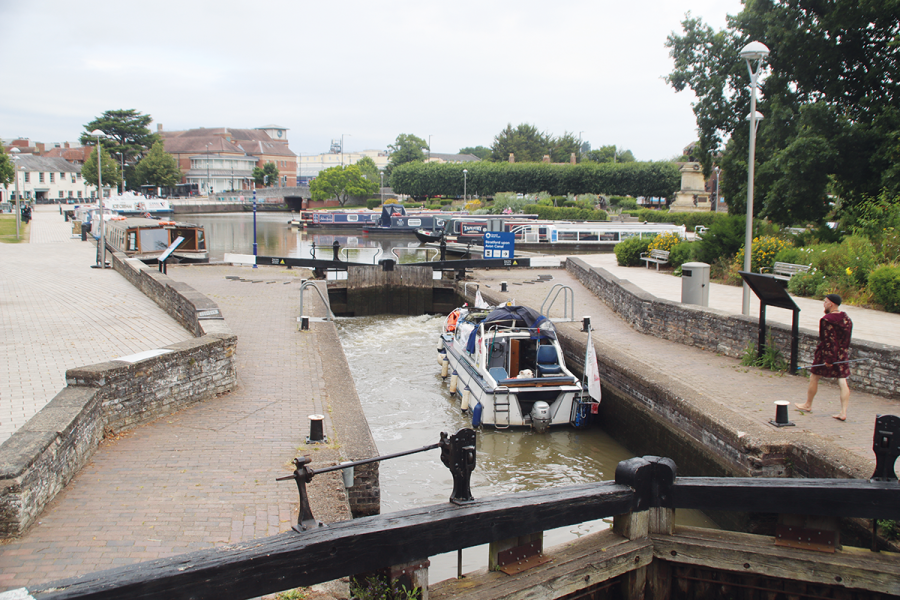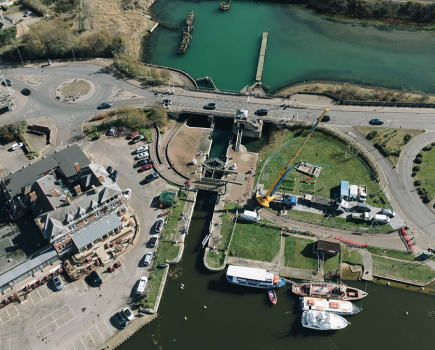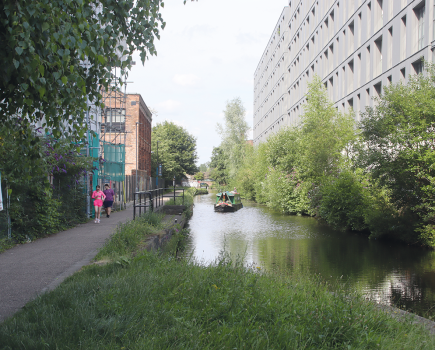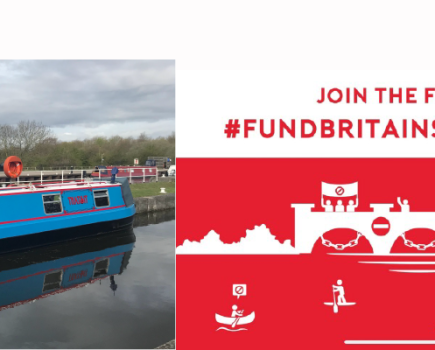Leaving the River Avon in the heart of Stratford, surrounded by tourists and reminders of William Shakespeare, this ever-popular cruising route climbs through Warwickshire countryside, passing narrow locks, iron aqueducts and deep wooded cuttings, to reach the outskirts of Birmingham.
Words and pictures by Martin Ludgate
A plague on both your houses” said Mercutio, in William Shakespeare’s play Romeo and Juliet. But actually, from the point of view of the canal which passes through Bancroft Basin amid the gardens alongside the Shakespeare Memorial Theatre in the heart of Stratford-upon-Avon, “a plaque” might be more appropriate than “a plague”: there are several commemorative plaques by the canal, not attached to any houses, but to both sides of the entrance lock from the River Avon and elsewhere.
They recall that this canal, now a popular cruising route to the famous town and a crucial part of the Avon Ring boating circuit, was once completely derelict and in danger of being officially abandoned and allowed to be blocked by demolished bridges – but was rescued by one of the early waterway restoration projects of the canal revival, masterminded by the legendary David Hutchings, and reopened by the Queen Mother in a blaze of publicity in 1964.
A plaque on one side of the lock commemorates a less well-known but important contributor to the canal’s revival: Gilbert Hair, prison administrator, whose “enlightened and courageous” vision enabled prisoners to provide much of the voluntary labour on the canal’s restoration. Another marks the 50th anniversary of the reopening in 1974. And a third recalls the more recent reopening of the Upper Avon Navigation, completing the Avon Ring in 1974.
Before you set off on your cruise up the canal, it’s worth spending some time moored in the basin, not just to visit Stratford’s many attractions including the Theatre, Shakespeare’s birthplace and more, but also for a good look around the gardens where there are other, less canal-related commemorations. These include a statue of Hermaphroditus created for the 1851 Great Exhibition in London, the Gower Memorial to Shakespeare featuring four of his most famous characters, and a display relating to the first ever Shakespeare festival which took place here in 1769, over 150 years after the Bard died. It has to be said that it was a less-than-successful event – it rained continuously, the planned pageant had to be abandoned, the fireworks got soaked, the river burst its banks leading to the abandonment of the ball – and no actual Shakespeare works were performed. It made it into the Book of Heroic Failures as the “Worst Shakespeare Festival” but helped lay the foundations for Stratford’s tourist industry and Shakespeare’s international fame.
 Royal Shakespeare Theatre
Royal Shakespeare Theatre
Book tickets for a play at the home of the Royal Shakespeare Company, visit the theatre to climb the tower for a view over Stratford, or book a tour: there are daily theatre and costume tours, weekly ghost tours, and monthly scenery workshop tours.
Having slightly overdosed on Shakespeare, it might be a slight relief to leave the centre of the town’s tourist attractions and disappear under a low bridge (albeit not as low as it was prior to a 1994 rebuilding, when it was a case of clearing everything off the roof and hoping your boat would fit) and follow the canal’s narrow and rather secretive course through the town. Running along the backs of houses, it climbs through four locks: unlike the wide-beam entrance lock from the river, these (like the rest of the locks on the canal) were built for the 70ft by 7ft narrowboat. Those interested in such detail will note that they have single gates at both ends, rather than the paired bottom gates more prevalent on narrow canals – it’s been suggested that this may be the result of the canal company making economies during construction as money was running short on the later parts of the canal to be built.
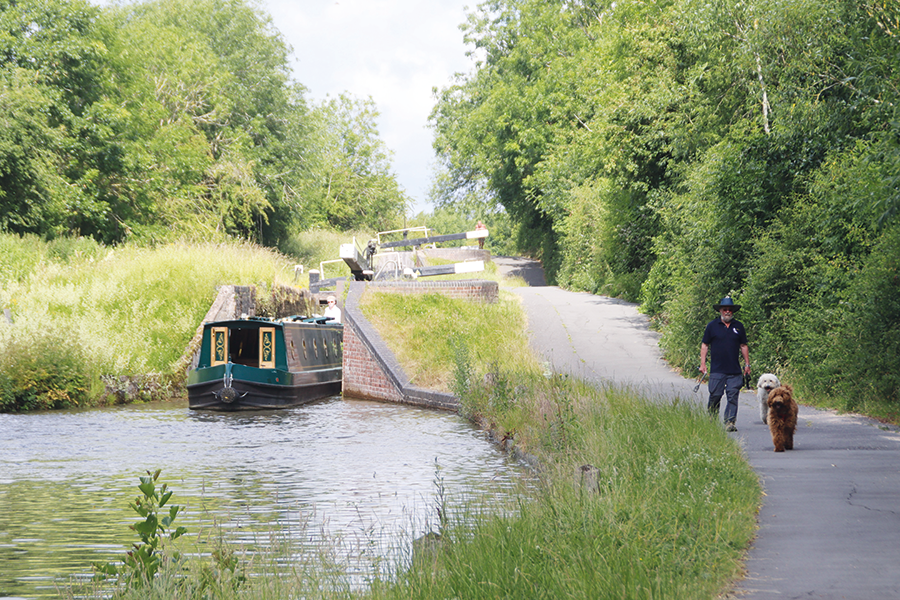
Descending the 11 Wilmcote Locks towards Stratford
Another mile of urban (and occasionally industrial) cruising and another lock, and Stratford is left behind as the canal heads into rural Warwickshire. This is a canal with plenty of locks (it needs them to climb from the low-lying Avon valley to the higher ground around Birmingham), and there isn’t much rest before the flight of 11 closely-spaced Wilmcote Locks. Some of the canal’s locks still bear the marks of the volunteer restorers of the early 1960s: many of the lock walls had bulged inward during the years of dereliction and needed to be moved further back in order for boats to pass: this was achieved by demolishing them (sometimes with explosives), putting up some rather rudimentary wooden shuttering, and casting a new concrete wall several inches further back. Referred to affectionately as “hutchcrete” after David Hutchings, much of it has nevertheless stood the test of time – and in the embryonic days of the canal restoration movement it was an amazing achievement to get the canal reopened at all, without worrying about nice brickwork!
Wilmcote village follows the top lock: stop here for Mary Arden’s Farm (see inset), and a couple of pubs. There’s also another plaque by the bridge, this time commemorating the late 1950s fight to prevent the canal being abandoned to reduce the cost of a new bridge.
 Mary Arden’s Farm
Mary Arden’s Farm
A short walk from the canal at Wilmcote, a farm and two houses (one of them formerly the home of Shakespeare’s mother Mary Arden) have been saved and are maintained as a working Tudor farm open to the public with many rare breeds of farm animals, as well as a display of birds of prey.
The locks have now finished for a while, but you’ll get your first taste of a couple of other distinctive Stratford Canal navigation features. The first is the split bridge, built in the form of two iron half-bridges each cantilevered out from the side of the canal, leaving a narrow gap of an inch or so in the centre. This ingenious design allowed the towropes of horse-boats to be passed through the gap, avoiding the need to detach the rope when passing through, while also avoiding the expense of building a larger bridge with room for a towpath underneath it. They are found elsewhere (in particular on the Trent & Mersey Canal) as access bridges across the tails of locks, but the Stratford is the only canal that made use of them for normal farm accommodation crossings. Another canal company economy?
The second distinctive feature is the cast iron aqueduct – and the first of these is a Edstone (or Bearley) Aqueduct, an impressive structure spanning a small valley including a road and a railway line, and the longest canal aqueduct in England (although beaten by two in each of Scotland and Wales). An unusual feature is that the towpath is carried at canal bed level alongside the iron trough carrying the canal, so walkers get a duck’s eye view of any passing boats. It’s followed by Bearley Lock – sometimes known as the Odd Lock (quite rightly, as it’s the only lock in the six miles from Wilmcote to Preston Bagot). The attractive rural scenery continues as the canal reaches Wootton Wawen, site of a second, smaller cast iron aqueduct of similar design, a handy boatyard, a pub and the Yew Tree Farm Shopping Village alongside the canal. A rough path leads down from the south end of the aqueduct to the road, passing through one of the aqueduct’s spans and providing a view of how the structure was put together from iron beams and square-headed bolts.

Passing through one of the canal’s distinctive split bridges near Edstone
The break from locks comes to an end as the climbing begins in earnest at Preston Bagot. Officially the locks might be known by different names (the first three are Preston Bagot Locks, then there are three Claverdon Locks, two Lowsonford, three Rowington and so on…) but in reality, for boats heading on up the northern Stratford Canal towards King’s Norton and Birmingham there is no break of more than half a mile until you reach the top of Lapworth Locks – which would make it a flight of 36 locks, all told, and arguably qualify as the longest flight in the country. But it isn’t particularly hard work, and the many locks follow an attractive route, initially wooded and winding, and passing the diminutive Yarningale Aqueduct, the third of the three cast iron structures on the canal. Another of the canal’s distinctive features makes an appearance, with several of the curious barrel-roofed cottages unique to the southern Stratford – and the subject of apocryphal suggestions that they were built by canal workers who were more used to building tunnels (although if that isn’t the real reason, then what is?).
I specifically mentioned that boats that were heading for King’s Norton were in for the long haul up all the locks, and that’s because almost half way up the 36, as the canal passes between Lapworth and Kingswood villages, there’s a junction where an arm heads off eastwards. This is a short link leading to the Grand Union Canal which comes within a few hundred yards of the Stratford in this area: at the end of the arm, turn right for Braunston, London and the South, or left for an alternative route into Birmingham. One lock further up the Stratford Canal, there’s another junction and another branch leading off east: this is a second link via another lock to the same arm leading to the Grand Union. The existence of two connections is a relic of inter-company canal politics and rivalries in the early days – the two companies argued about where the connection should be in order to satisfy the original Act of Parliament, there were court cases, and in the end the route had to be changed. Much more recently the original connection was reopened, so now you have a choice.

Wootton Wawen Aqueduct. Note the towpath running level with the canal bed
Look out for yet another two plaques by Lock 21, one commemorating a new lock gate paid for by founder of the Inland Waterways Association Robert Aickman, and the other carrying the memorable quote “We were not experts therefore we did not know what could not be done” from the one and only David Hutchings.
Beyond the junctions, we’re on the northern Stratford Canal, which never fell derelict (although it was touch-and-go for a while around 1950), was built several years earlier than the southern length, and shows one or two differences. The locks now follow the more conventional pattern of single top and double bottom gates, and they’re laid out more closely together, especially the run of nine from Lock 14 to Lock 6 which follow one another closely with barely space for full-length boats to pass each other between locks.
Finally, four more widely spaced locks bring us to the summit at Lapworth Top Lock, with eleven miles of level canal from here onwards. But once again, the lack of lock interest is made up for by the appearance of another Stratford Canal feature – lift bridges, with three of them on the northern section, variously operated electrically with a Canal & River Trust ‘Watermate’ key or manually using a lock windlass.
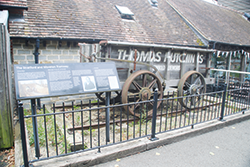 The Stratford & Moreton Tramway
The Stratford & Moreton Tramway
A little-known piece of transport history is this long-disused horse-drawn railway, completed as early as 1826, which connected Moreton-in-Marsh to the canal at Bancroft Basin in Stratford. There is a small display including a wagon on a length of track, the tramway’s bridge over the Avon survives, and you can walk the first length leading out of town – which leads to the Old Tramway Inn.
If the southern length was characterised by aqueducts, the northern is notable for long, tree-lined and sometimes quite gloomy cuttings as it sticks to the 453ft contour (the ‘Birmingham Level’ to canal engineers) through the slightly higher ground. Hockley Heath is the first actual town since Stratford, providing shops and a canalside pub (with its own diminutive canal arm and towpath bridge). At Earlswood, moorings occupy the start of a feeder which brings water in from the nearby Earlswood Lakes reservoirs, which are now an attractive site for spotting birds and other wildlife, with walking trails around the lakes.

Nine of the locks above the junction at Lapworth are in a close sequence with barely room for boats to pass between locks
Shirley Drawbridge carries a sometimes fairly busy road, and marks the beginning of the built-up area surrounding Birmingham – but you wouldn’t necessarily realise this. The long wooded cuttings continue, the trees serving to hide the surroundings for much of the way as the canal makes its way through the city’s southern suburbs. Another canalside pub features another diminutive canal arm with towpath bridge.
The canal saves a couple of its important engineering features until the end. The first is Brandwood Tunnel, 352 yards long and the only one on the canal; it’s wide enough for two boats to pass inside, but lacks a towpath so walkers will need to follow a route along the roads above. And to take us back to where we began at Stratford-upon-Avon (not to mention once more bringing up the subject of plaques), its portals each carry an original stone plaque bearing the head of William Shakespeare in profile view.
Not far beyond the tunnel, the remnants of a former swingbridge might also be regarded as an important feature, as this was where IWA pioneer and author Tom Rolt famously brought his boat Cressy through in 1947, requiring the bridge (a replacement of the original swing bridge, not designed to be easily opened) to be laboriously jacked up by canal staff so that he could pass, establishing that the canal was still navigable and helping to prevent it falling into disuse.
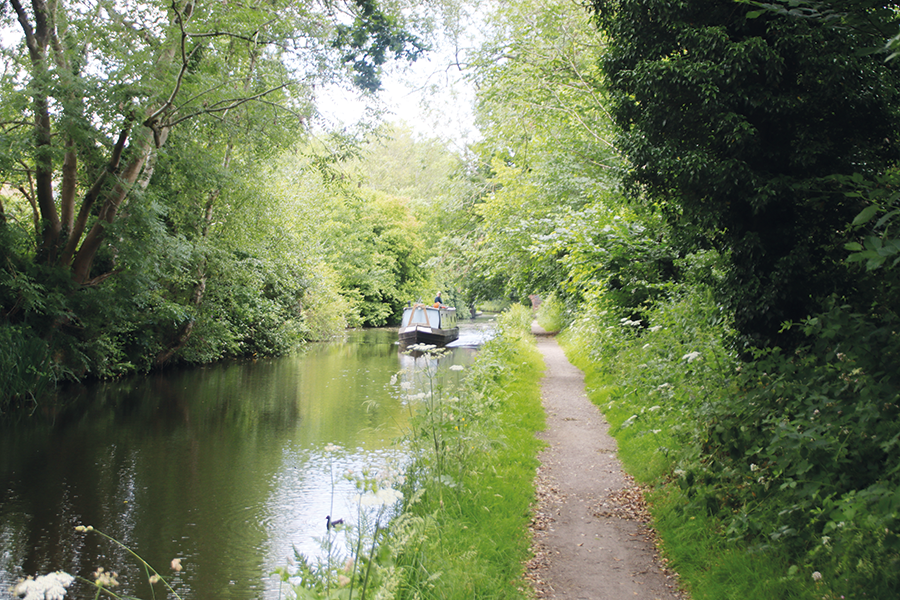
The northern lengths of the canal are characterised by deep, often wooded cuttings
The actual final engineering feature is a remarkable former stop-lock, a water regulating structure designed to protect each canal company’s supplies from being lost to rival canal companies. It was uniquely built with vertically rising guillotine gates at each end, and although with its minimal change in water level from one side to the other (quoted as just one inch!) it clearly has no useful function now that all the canals are under one ownership, it has been preserved as a historic structure.
A few hundred yards beyond, the canal ends at a T-junction with the Worcester & Birmingham Canal, the junction accompanied by a fine lock cottage which has happily been restored following a serious arson attack several years ago. Turn right here for Birmingham, or left for Worcester and to continue around the Avon Ring circuit.
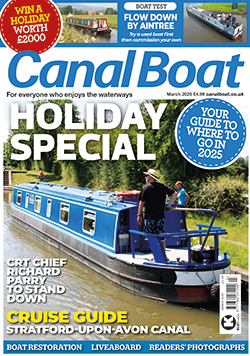 As featured in the March 2025 issue of Canal Boat. Buy the issue here
As featured in the March 2025 issue of Canal Boat. Buy the issue here

